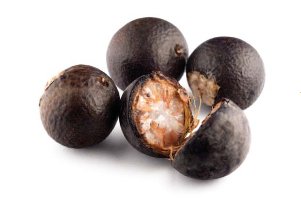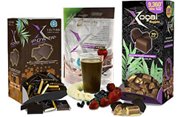The Acai Berry Science
On the floodplains of the Brazilian Amazon, the acai plant has been a staple of the local diet for hundreds of years. The roots, stems, heart and leaf fronds are all harvested for local use. The most potent part, however, is the actual fruit of the plant - the acai berry.
The Western world has known about acai since the early eighteenth century. Ancient Portuguese texts describe the fruit in detail. But until recently, numerous factors have made it nearly impossible to obtain acai outside of the Amazon. The area is remote, and travel in and out is difficult, especially for transporting a perishable food item.

Only within the last sixty years has the availability of acai spread beyond the Amazon, with markets in Peru and Venezuela showing increased interest in the little fruit.
Within the last six or seven years, the popularity of acai berry has exploded. Now the secret is out. Acai has been spotlighted by best-selling author Dr. Nicholas Perricone in his book on heal and aging, The Perricone Promise.
Oprah and The Today Show have both discussed the fruit.
The acai berry is only now beginning to give up al of its secrets. For years, locals enjoyed the juice of the berry much the same way; we enjoy its nutritional equivalent, orange juice, in the U.S. It is such an important part of the local diet that a typical individual consumes over two liters a day.
Science is now proving that centuries of acai enthusiasts already know: Acai's synergistic blend of nutrients and health-promoting compounds make it an undisputed powerhouse for health a d wellness.
Acai was first studied in the 1930s by Portuguese and French scientists focusing on the vitamin and mineral content of the berry. It wasn't until the 1960s that technology allowed scientists to study the full spectrum of acai's macronutrients, trace minerals and other bioactive compounds. More recent studies have concentrated on acai's lipid, carbohydrate and protein content. The latest studies have revolved around the berry's antioxidant properties.
What becomes immediately apparent in a quick review of acai research is that
the fruit is a great source for a full spectrum of phytonutrients. Studies suggest that the fruit has disease prevention, anti-aging and overall energy-boosting properties. Most importantly, the acai berry is a potent antioxidant.
Antioxidants protect against cellular damage by neutralizing free radicals through the donation of an electron. Some of the more well-known antioxidants include vitamins C and E, as well as various flavonoid phytonutrients, which protect the plant and provide its color.
Various studies point to acai's potential to fight free radicals. A recent study from the journal Neurology shows how oxidative damage resulting from high blood sugar causes damage to nerves (neuropathy), often leading to chronic nerve pain and even amputation of limbs. Acai's antioxidant compounds can fight this damage in two ways. First, it can neutralize the free radicals causing the oxidative damage to nerves, and second, it can help to normalize the body's blood sugar levels, thereby minimizing the effects of sugar as an oxidative agent.
Research done by such prestigious institutions as the University of Bonn in Germany and the University of Florida have determined that acai has up to ten times the antioxidants of red grapes and ten to thirty times the anthocyanins of red wine -- the traditional paragon of antioxidant foods!
Researchers at the University of Florida recently found (January 2006) that the polyphenols in the acai berry reduced cell proliferation (growth) of leukemia cells by up to 86 percent. The research team also stated that the acai berry offers a rich source of bioactive polyphenols.
For more healthy tips and news on stem cell science please
click HERE
Return from Acai Berry Science to Acai Berry Information







